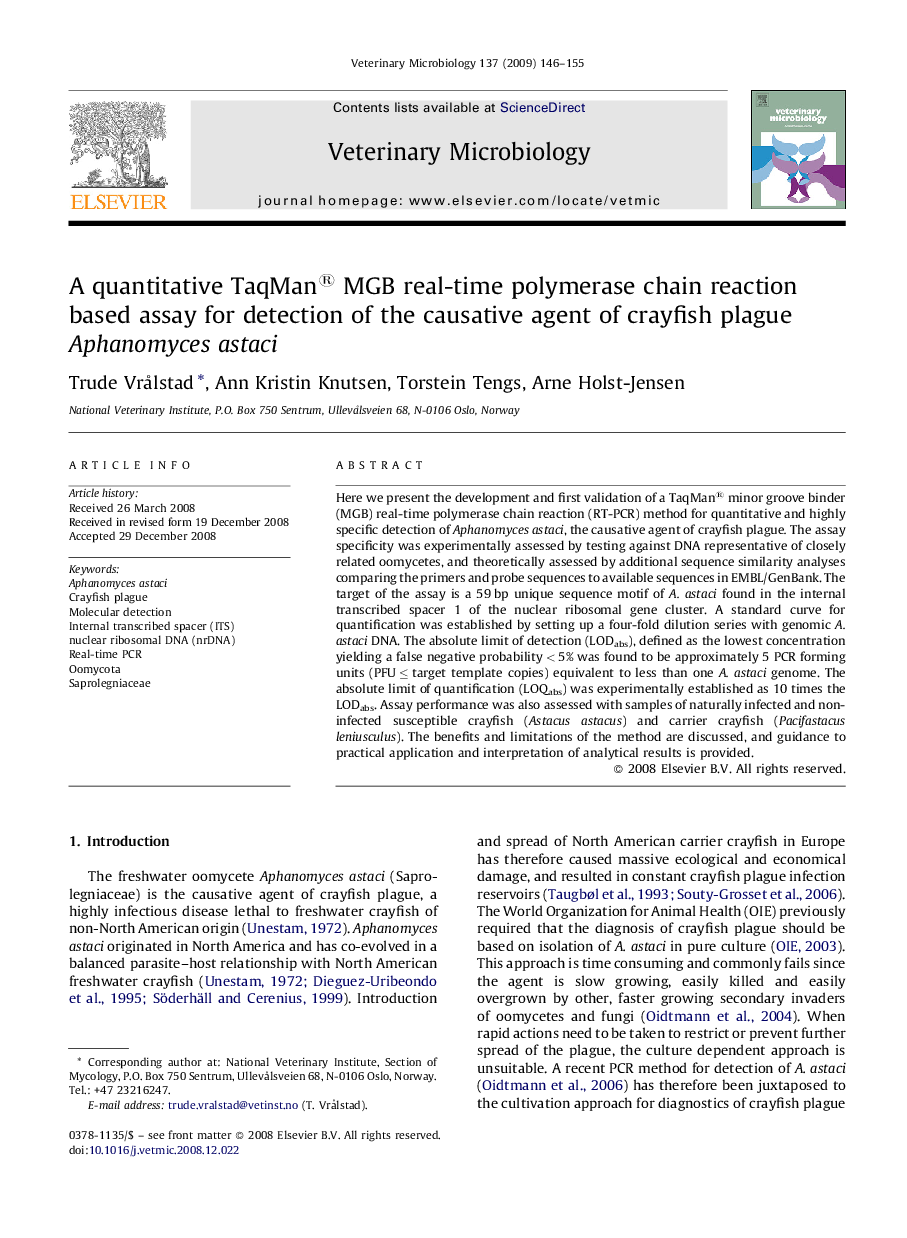| Article ID | Journal | Published Year | Pages | File Type |
|---|---|---|---|---|
| 2468503 | Veterinary Microbiology | 2009 | 10 Pages |
Here we present the development and first validation of a TaqMan® minor groove binder (MGB) real-time polymerase chain reaction (RT-PCR) method for quantitative and highly specific detection of Aphanomyces astaci, the causative agent of crayfish plague. The assay specificity was experimentally assessed by testing against DNA representative of closely related oomycetes, and theoretically assessed by additional sequence similarity analyses comparing the primers and probe sequences to available sequences in EMBL/GenBank. The target of the assay is a 59 bp unique sequence motif of A. astaci found in the internal transcribed spacer 1 of the nuclear ribosomal gene cluster. A standard curve for quantification was established by setting up a four-fold dilution series with genomic A. astaci DNA. The absolute limit of detection (LODabs), defined as the lowest concentration yielding a false negative probability < 5% was found to be approximately 5 PCR forming units (PFU ≤ target template copies) equivalent to less than one A. astaci genome. The absolute limit of quantification (LOQabs) was experimentally established as 10 times the LODabs. Assay performance was also assessed with samples of naturally infected and non-infected susceptible crayfish (Astacus astacus) and carrier crayfish (Pacifastacus leniusculus). The benefits and limitations of the method are discussed, and guidance to practical application and interpretation of analytical results is provided.
